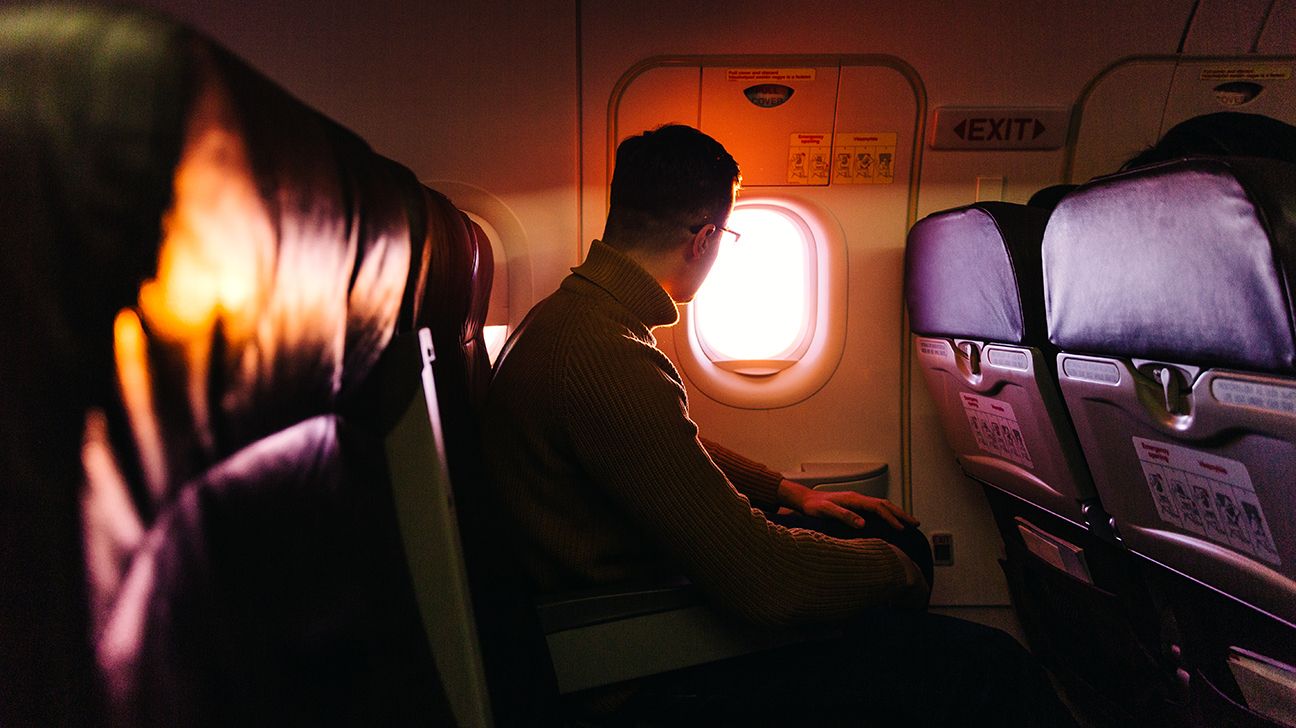Depending on airline regulations, you can typically fly with shingles. Still, you should consider your symptoms and check if you have any open blisters. These are contagious and may transmit the virus to other travelers.

Shingles (herpes zoster) is a common viral condition. The virus lies dormant in people who’ve had chickenpox but can become active again later in life.
You can’t predict when shingles will become active. If you develop shingles before traveling somewhere by plane, you might be wondering if you’ll need to alter your travel plans.
Here’s what you need to know before your flight.
Flying doesn’t affect shingles. Still, you may find that your symptoms are uncomfortable during air travel or that you’re not well enough to endure the duration or challenges of your trip.
Shingles symptoms may include:
- a rash that can blister
- sharp pain
- skin irritation that tingles, itches, or feels numb
- headaches
- fever and chills
- stomach upset
Talk with a doctor about your symptoms and discuss whether they think it’s advisable for you to travel with your symptoms.
Also, consider the scope of your travel before flying with shingles. Managing and reducing your symptoms may require plenty of rest. Flying and other travel-related activities could make you feel worse.
Your condition may worsen if you don’t treat and manage the symptoms. Serious side effects of shingles can include chronic pain, vision problems, and changes in blood flow to the brain.
Shingles is only contagious when your rash is blistering and open, exposing the fluid inside. This poses a risk to anyone who’s never had chickenpox or never been vaccinated for it. If they come into contact with the fluid or breathe in the virus from the exposed blisters, they may develop chickenpox.
People who are pregnant may have a higher chance of developing chickenpox, which can lead to potentially severe complications.
If you need to travel by air, covering an open shingles rash is necessary to reduce the possibility of spreading the virus, especially when close to other people on a plane.
Avoid touching the open sores, and be sure to wash your hands frequently. This applies to air travel and other activities with people.
Shingles is no longer contagious when all the open sores from the rash have scabbed over.
There’s no ban on flying with shingles, but there are several factors to consider before moving forward with air travel:
- Can you travel comfortably with your symptoms?
- Can you cover and contain open, blistering sores to prevent passing on the virus?
- Is there a chance the airline will prevent your travel? Airlines have a right to refuse unwell passengers.
The Centers for Disease Control and Prevention (CDC) advises travelers with infectious conditions like shingles to wait to fly until any contagious symptoms have cleared up. This may mean postponing air travel until any open sores have scabbed over, which can take a week or two.
Checklist before flying with shingles
Before you decide to fly with shingles, you can:
- Talk with a doctor about your symptoms and ask them if you can fly or travel at all.
- Call your airline to discuss your situation and confirm whether you can board your flight.
- Pack medications and other virus management supplies in your carry-on luggage.
The most effective treatment for shingles is an antiviral medication that your doctor can prescribe. Antivirals are oral medications that:
- speed up the healing of your rash and blisters
- slow the spread of the virus
- reduce any pain you experience from shingles
- may prevent the condition from becoming more severe
Seeking immediate treatment for shingles can help speed up your recovery. Antivirals are most effective if you start them within 3 days of developing blisters.
Below are answers to some frequently asked questions about shingles and its management.
How long does shingles last?
Many cases of shingles last
What should you not do if you have shingles?
If you have any open sores from shingles, avoid touching the affected area. If you do, washing your hands with soap and water for at least 20 seconds can help remove the virus.
Avoiding public spaces like work or school, as well as people who are pregnant, immunocompromised, or under 1 month old, can help prevent transmission of the virus to people at high risk of infection.
It’s also best to avoid swimming, playing contact sports, and sharing linens like towels or clothes.
Should someone with shingles be quarantined?
Quarantines aren’t required for shingles, but the virus can spread during a certain period of the illness. Shingles is contagious when you have open sores on your skin from the virus.
You can protect yourself and others by keeping these open areas covered. If you can’t cover the open sores because of their location on your body, try to avoid contact with others until they heal.
Shingles is a serious illness that may require you to rethink your air travel plans. Talk with a doctor to determine whether or not it’s advisable for you to fly.
Your condition is contagious if you have open sores. Additionally, your symptoms may be uncomfortable when traveling.
It’s important to seek early treatment for shingles and to follow your doctor’s advice. Taking antiviral medications and making lifestyle adjustments can help you manage shingles so that you can get back to activities like air travel.
